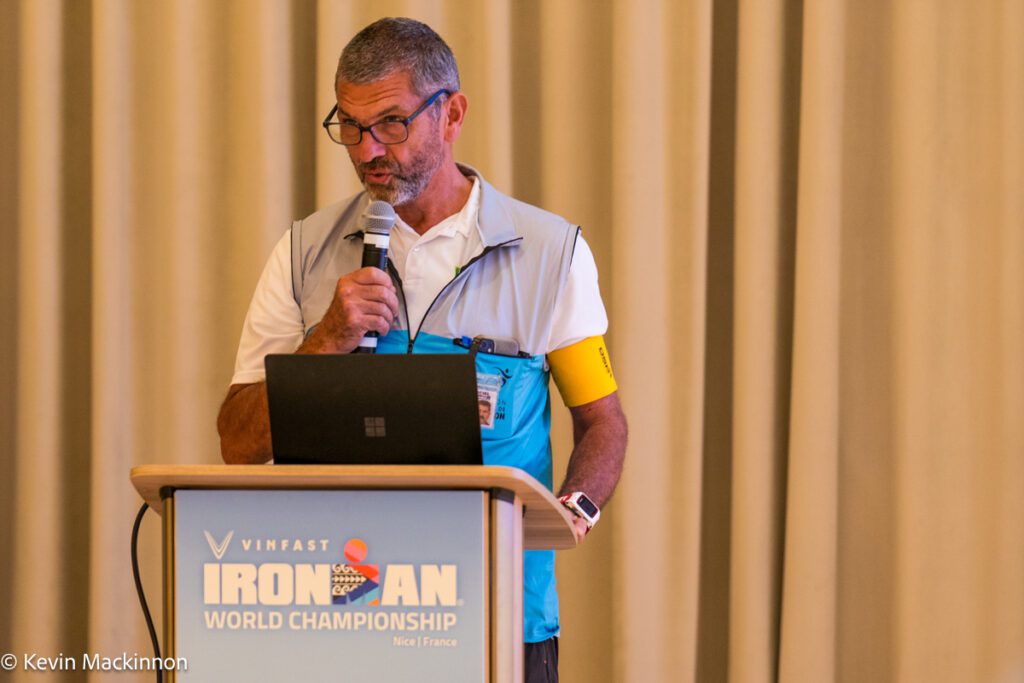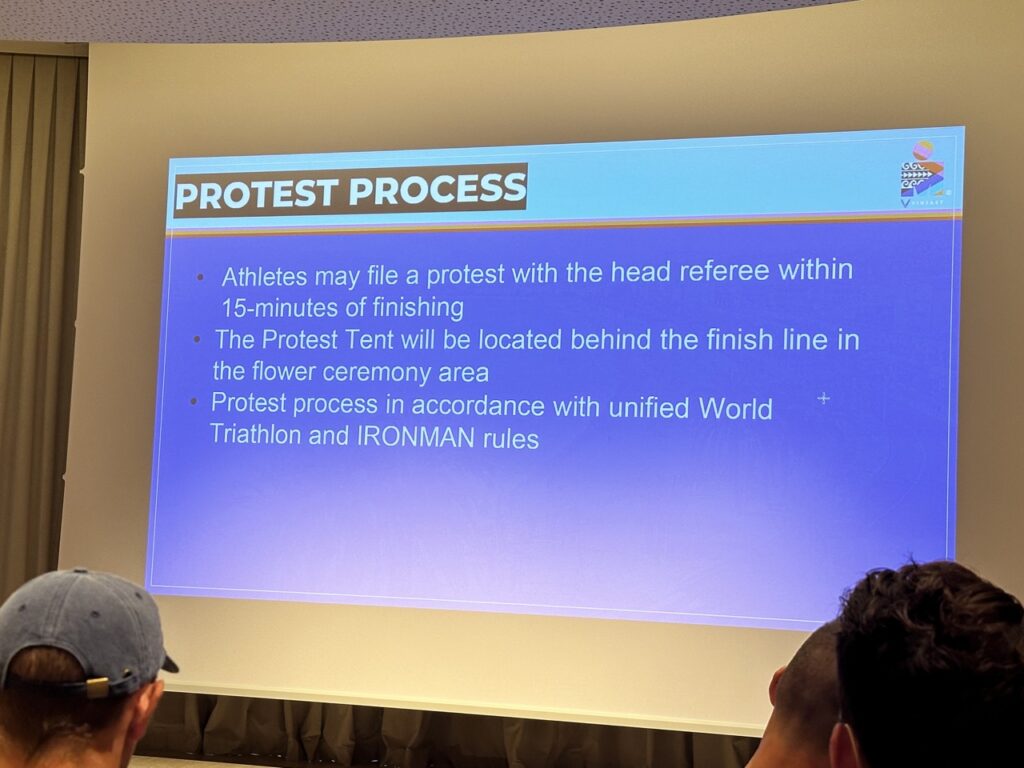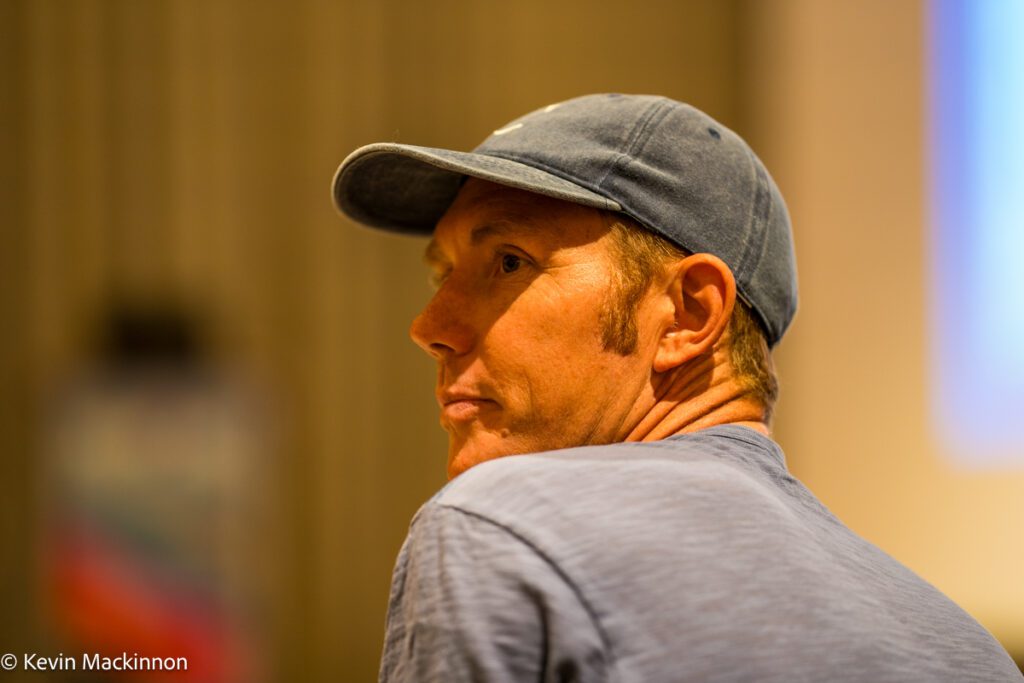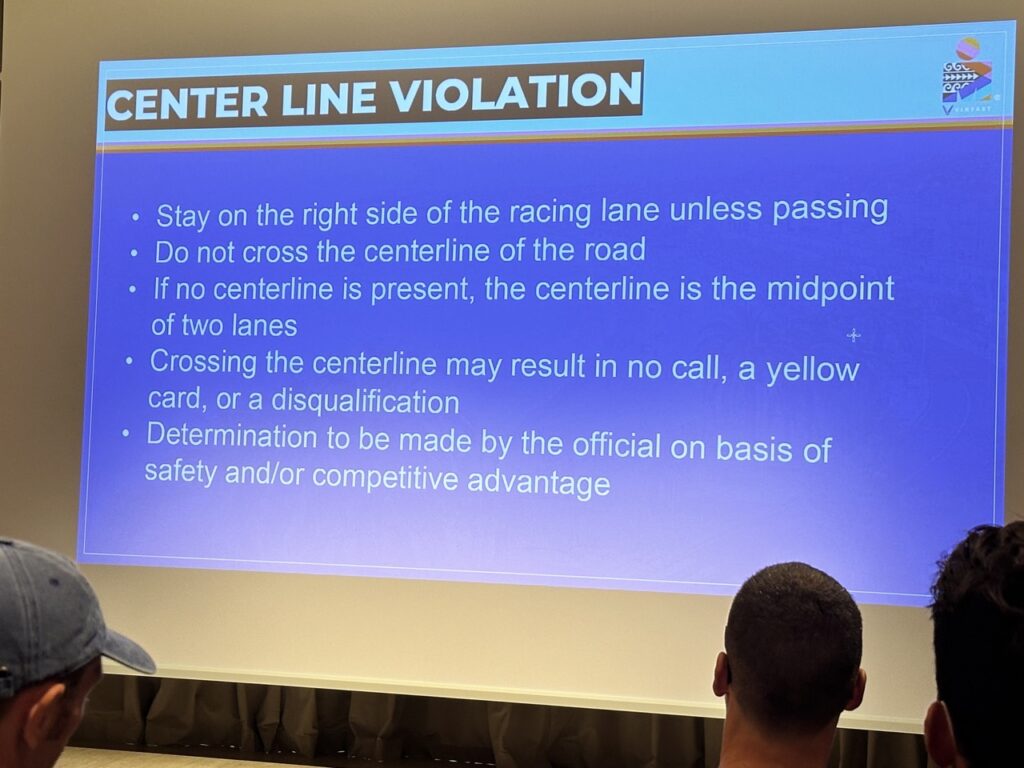The “fireworks” start early as pros get frustrated over centre-line rule at Nice world championship

Earlier today we posted a story in which we quoted many of the pros getting ready to race here at the Ironman World Championship on Sunday. May predicted “fireworks” as athletes struggled after pushing too hard, too soon, thanks to the challenging course and strong field.
The pros have spoken: There will be fireworks at the Ironman World Championship Nice
Little did we know we’d only have to wait for the pro briefing for the fun to start.
During today’s meeting, a number of athletes balked over the centre line rule, which has been a controversial topic since Canadian star Lionel Sanders was DQ’d for crossing the centre line during the Ironman 70.3 World Championship in Lahti, Finland.
The pros were told by head referee Daniel Palladino that “the centre line rule is going to be enforced.”
And, yes, if there isn’t a line on the road, athletes have to “imagine” where one would be.
“If no centreline is present, the centreline is the midpoint of two lanes,” the rules state (see below).
Considering the challenging descents on narrow roads on the world championship course, athletes are concerned that unless they’re able to use the entire road, they could put themselves in danger.
According to officials, they have that covered – that’s why if you cross the centre line, you could get no call, a yellow card (one minute penalty) or a blue card (5 minute penalty).

“We understand that on this course, that sometimes to be safe, athletes have to cross the centre line,” the athletes were told. “Depending on the viewpoint of the referee, you might be crossing the centre line of the road to avoid an accident. If the referee feels you are crossing to get an unfair advantage, you will get a yellow card.”
A new twist to the rules is that referees won’t be handing out immediate DQs for a centre line violation.
If a referee believes that an athlete crossed the centre line and created a dangerous situation, the athlete will be shown a yellow card and expected to serve a one minute penalty at the next tent. That referee can then go to the head referee (in this case Palladino) and argue that they feel the athlete should be disqualified. Palladino will be the only one who can disqualify an athlete for a centre line violation.
That means athletes won’t necessarily know if they have been disqualified until later in the race.
If an athlete feels that a penalty was unwarranted, they can protest the call, which they have do do within 15 minutes of finishing the race.

As some athletes pointed out, though, that minute could be costly – meaning you’ve lost the group that you were riding with, or in a race as close as this is likely to be, simply lose valuable time and places. Even if an athlete were to win their protest, they wouldn’t be credited with the time they spent in the penalty tent.
In the end, the message from the officials was pretty simple: “If you cross the centre line, you are putting your race in the hands of the referee who is following you.”
If that official felt you had no choice but to cross the centre line in order to be safe, there won’t be an issue. It’s a judgement call.
Palladino tried to reassure the athletes:
“We’re going to let you race,” he said, pointing out that many of the officials working on Sunday have worked at world championship and Olympic events in the past.
Reality check
As was pointed out (more than a few times) to the athletes, the officials are looking to ensure the race is safe and fair. If you’re going so fast that you have to stray across the road, you could be penalized, but also, you could be at risk. At the Ironman 70.3 World Championship here in Nice in 2019 Canadian pro Jackson Laundry went off the road and shattered his shoulder.
For many athletes, being able to utilize their proficient descending skills could be a game changer in Sunday’s race, which is why they are keen to take advantage of the closed roads and use both sides of the road to maintain their speed. They’d no doubt argue that what’s considered safe for them is completely different to a pro athlete from, say, Guelph, Ont., who doesn’t get to descend in the Alps on a regular basis.
Ultimately there’s the issue of safety. While, in theory, the roads are completely closed on race day, sometimes “rogue” vehicles do make it onto the course. While the chances of that happening are slim, but what happens if that did happen as one of our pros ripped around a corner at 80 or 90 or 100 kph?
That said, one would imagine the likelihood of that rogue car not getting stopped by the lead vehicles is really small, and with the pros all relatively close to the front, it’s not hard to conceive of an argument for pros having a different rule than other athletes in the race. Something they could argue to the organization that comes up with the rules, World Triathlon? (Ironman, for the most part, follows World Triathlon guidelines, applying for dispensation for any rules they would like to change.)

In the end, the man in the field with probably the most experience racing bicycles, Ineos Grenadiers professional cycling team member Cam Wurf, seemed to be the least worried about the rules.
“The rules haven’t changed,” he said, referring to the world championship that took place here in 2019 and the Ironman races that have taken place since. “You were fine then. You’ll be fine on Sunday.”
The rules haven’t changed, but one positive outcome of Sanders’ DQ in Lahti is that there’s been talk about this issue before the race, which is exactly what the Canadian pro had hoped to see. Is there more work to do? Many at today’s pro briefing certainly seemed to think so.


